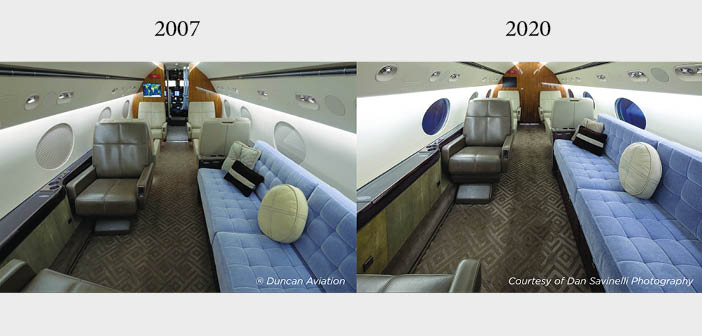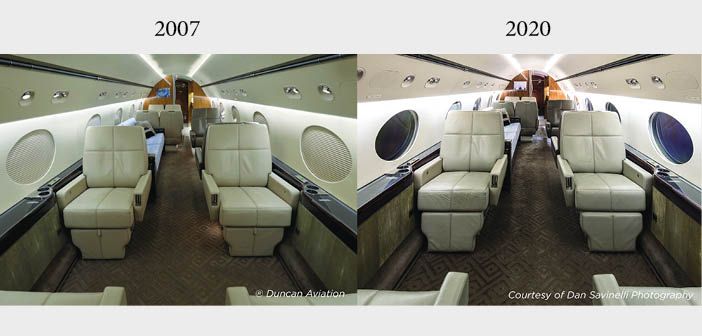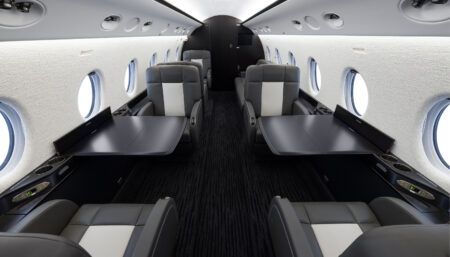Duncan Aviation explains how a timeless design, high-quality materials and expert installation and application of interior components are important in creating interiors that look great for many years – with reference to a Gulfstream GIV it refurbished in 2007.
One of the biggest tests of quality is how long something lasts. In aircraft cabins, years of constant use can impact the function and aesthetics of interior components. Wear and tear on seats, tables, cabinetry and galleys can really date an aircraft.
“Longevity is subjective; a lot can depend on how often the airplane is used and how many passengers are regularly on board,” says Nate Klenke, aircraft modifications sales manager at Duncan Aviation. “In addition, the longevity is based on the quality of the products used coupled with quality installation standards and processes. Of course, how well the interior is taken care of, cleaned and maintained also plays into its lifespan.”
The company contends that signs of a quality refurbishment don’t always show until several years after the work is done; it rests in the durability of the products selected and the quality of the completion process.
In 2007 the company completed a Gulfstream GIV that was placed on static display at the NBAA’s annual convention in Atlanta, Georgia. The aircraft featured new paint as well as a fresh interior. Duncan Aviation believes a look at that aircraft today, after 13 years of regular use, proves that its design was timeless and the interior installation and construction was of the highest quality.
From the beginning, Duncan Aviation’s design experts worked alongside Aviation Aesthetics’ owner and founder Havilande Whitcomb to turn the owner’s vision into a reality. The two firms also worked closely with many other parties, including the owner, who chose high-quality materials such as mohair upholstery and a dark wool custom carpet that was integrated into a cohesive unit to flow seamlessly. Flight attendants were involved in the process to ensure items such as silverware, snacks and beverages were exactly where they needed to be in the reconfigured galley.
The finished product featured intricate design details such as inlaid polish nickel, while the drink rails have a carbon fibre flat finish, installed so the fibre pattern lines up along the entire drink rail. Paldao and wenge woods were the primary finishes used to complement the carbon fibre accents. On the lower sidewall, stingray skins were used to enhance the design. The stingray skin, a unique, natural product, had to be cut to perfection with a high-pressured water cutter and needed to be tightly sealed to provide a continuous pattern. The interior also features a credenza with a pop-up monitor; Duncan Aviation believes this was the first automated lift to raise and lower a monitor from a credenza for viewing.
“The collaborative effort between a discerning owner, me as an interior designer, the Duncan Aviation design team and the production teams was refreshing,” says Whitcomb. The level of craftsmanship was incredible and there was razor-like focus on the small details.”

Fast-forward to 2020, and Klenke believes the GIV interior and paint have held up incredibly well. “The aircraft featured a selection of high-quality materials and has held up due to excellent design and craftsmanship by Duncan Aviation,” agrees Whitcomb.
The GIV is managed by Volo Aviation and is available for charter through Solairus Aviation’s charter certificate. “When I tell passengers that the paint and interior are 13 years old, they are usually stunned,” says Robert Tod, director of maintenance and chief pilot at Volo Aviation.
2007 photos by Duncan Aviation. 2020 photos courtesy of Dan Savinelli.





